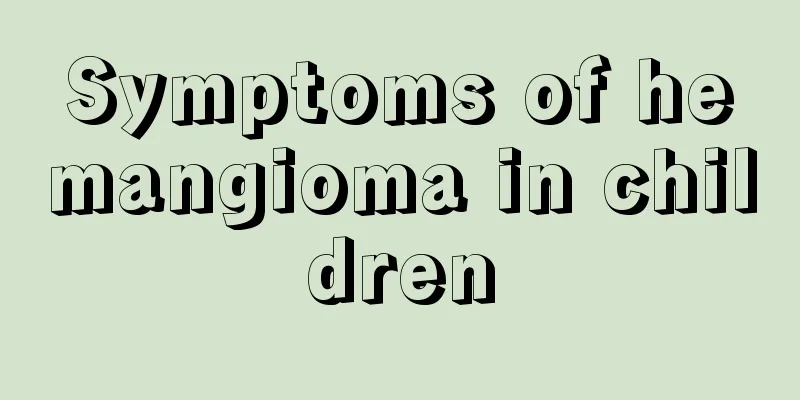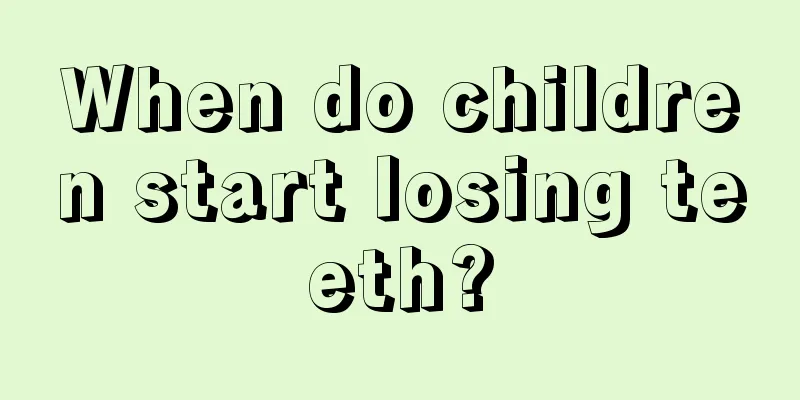What should I do if my baby has a fever and convulsions?

|
Children are the central word of a family. Every move of a child will involve the hearts of every family member. In the process of a child's growth, what parents hope most is that the baby can grow up healthily. But life is not always as it seems. Some babies have a poor physical constitution, so they may have a fever or even convulsions. Let me introduce to parents the causes and treatments of fever convulsions. Infantile convulsions, commonly known as seizures, are one of the most common emergencies in children. The main symptoms are uncontrollable contraction of whole-body or local muscles, body convulsions, difficulty breathing, and impaired consciousness. There are many causes of seizures in children. The more common ones are infections caused by bacteria and viruses, such as influenza, pneumonia, whooping cough, typhoid fever, dysentery, etc. In addition to causing poisoning and convulsions in children, these diseases can also cause convulsions due to high fever, which is called febrile convulsions. This type of convulsion often occurs during a fever and lasts for a short time. The person wakes up when the convulsion stops, and it is rare for more than two convulsions to occur during one fever. The convulsions will stop when the fever subsides. But it can recur, and convulsions may occur when a fever occurs. This type of convulsion often occurs in children under six years old. A febrile seizure in a child may stop on its own without any medical attention. If the seizure does not stop within 5 minutes, the child should be taken to a doctor immediately. Although a high fever is often caused by a viral infection, doctors still need to examine the child and sometimes do blood tests to find the true cause of the high fever. High fever convulsions recurred. As children get older, the chance of a second seizure decreases. Children over 6 years old are less likely to have a febrile seizure. It seems that convulsions caused by fever in babies are still a relatively common emergency. Fortunately, this disease is not contagious, and the incidence rate decreases a lot after the age of 6. Fragile babies are more prone to illness, so parents must pay more attention to their babies' food, clothing, housing and transportation when taking care of them to avoid various diseases in their babies. |
<<: What should I do if my three-year-old child has cavities?
>>: How to treat allergic dermatitis in children?
Recommend
What to do if your child vomits yellow-green water
It is a relatively common disease for children to...
Why do children like to bite their nails?
Biting nails is one of the most common bad habits...
Reasons why babies cry at night
Some babies really torture their parents because ...
Causes of freckles on children's faces
Everyone is familiar with freckles. Most of the f...
What is the best treatment for cerebral palsy in children?
The treatment of cerebral palsy in children is in...
What should I do if my baby has a thorn on his hand?
The baby's physical health is an issue that t...
Can a two-year-old baby eat donkey-hide gelatin cake?
Donkey-hide gelatin is a food that replenishes bl...
What is the reason for a four-month-old baby to have a fever and diarrhea?
Some newborns will have loose watery stools. The ...
Two week old baby crying at night
A two-week-old baby is very small, and his physic...
What to do if your child has kidney stones
In our lives, children with kidney stones should ...
What fruits are good for children with indigestion?
We can eat fruits frequently in our lives. Fruits...
What causes children's eyes to be afraid of light?
Many people do not take photophobia seriously. Ma...
What should children eat if they have diarrhea and repeated fever?
Diarrhea is really uncomfortable. Not only does i...
What's wrong with the white spots on the corners of the child's mouth?
From the birth to the growth of a child, mothers ...
The main reason why babies always shake their heads when sleeping
In life, many careful mothers will observe that t...









